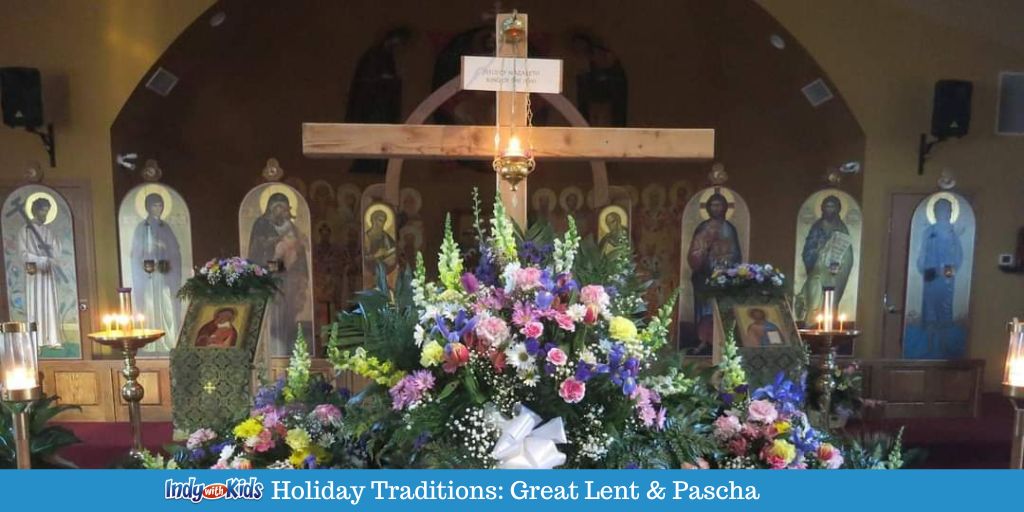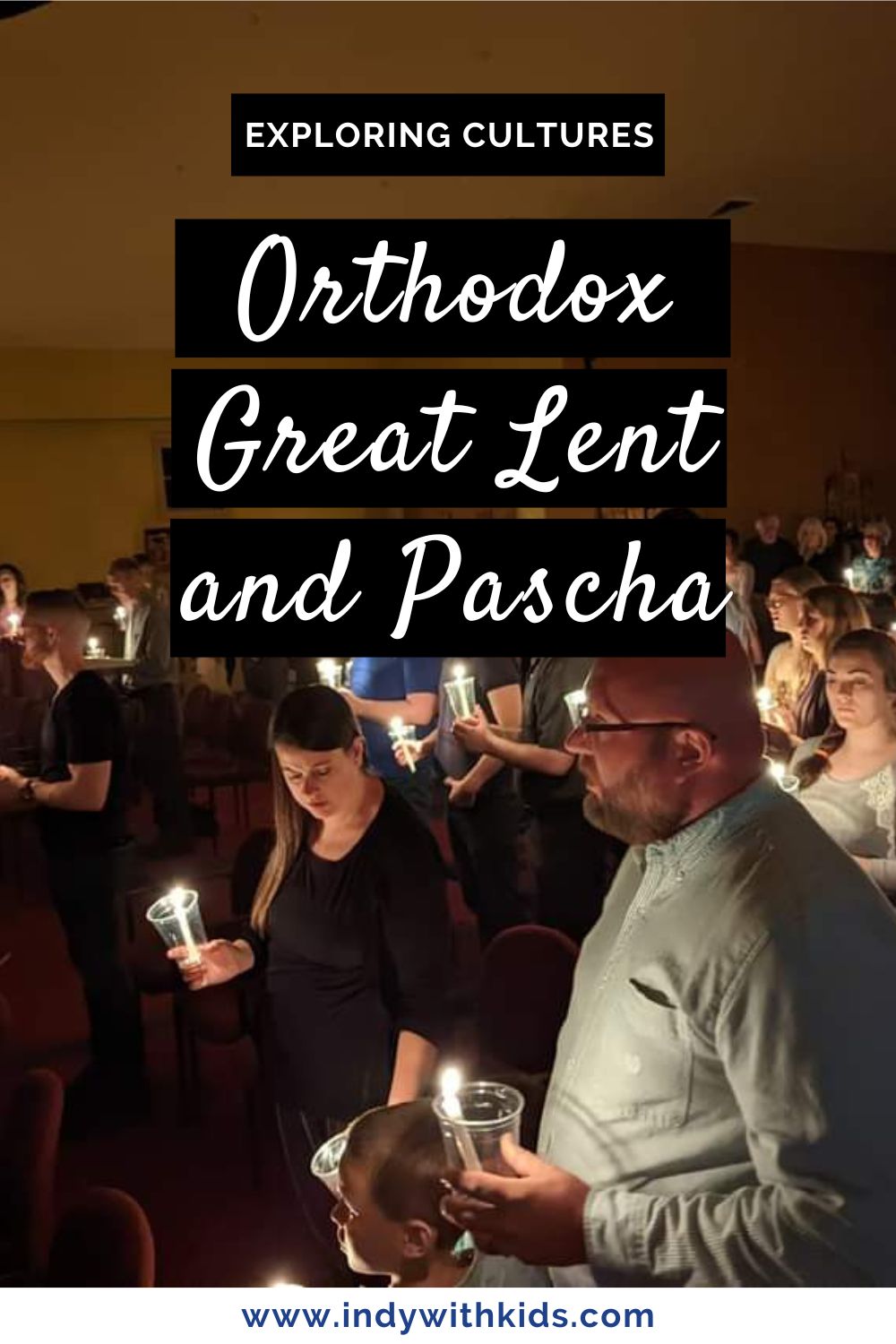At Indy with Kids, we love to learn about different cultures and traditions and invite you to join us on the journey! In this article, our Social Media Manager, Jess Deubner, shares how her family celebrates Great Lent and Pascha in their Orthodox Church.
In the Orthodox Church, a time of fasting, prayer, and almsgiving known as Great Lent takes place in the seven weeks preceding Pascha (Easter). Pascha is the celebration of the resurrection of Jesus. In 2024, Great Lent begins on March 18th with Pascha occurring on May 5th. Why is this so different from the Lent and Easter observations of Protestant and Catholic Churches? To put it most simply, Orthodox Pascha is celebrated on the first Sunday after the first full moon after the spring equinox.
While there are approximately 240 million Orthodox Christians in the world, many people in the United States are unfamiliar with the practices of the faith. The following information will be a brief and (hopefully) easily digestible account of the traditions, practices, and cultural aspects of this religion.
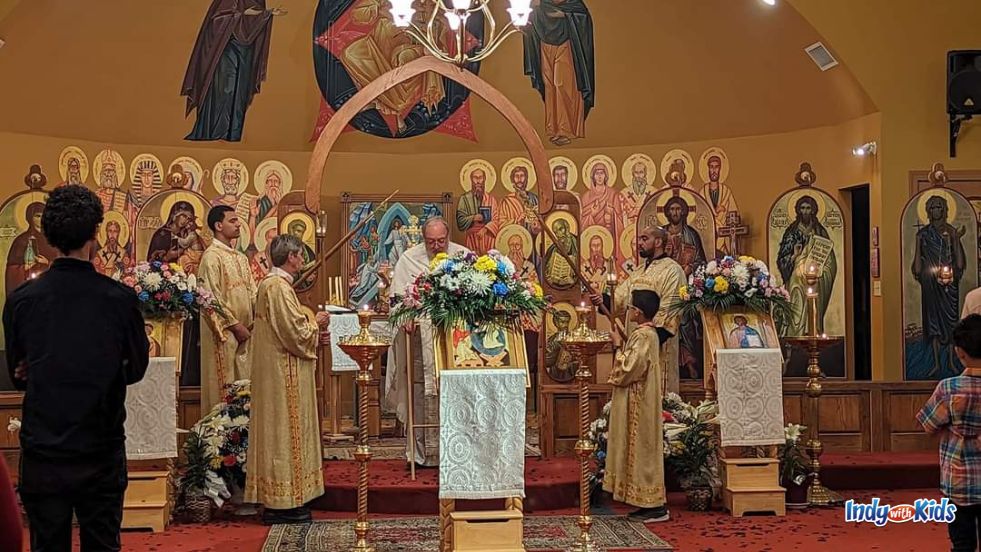
Meatfare, Cheesefare, and Repentance
In the weeks leading up to Great Lent, preparations are made. The second Sunday before Lent begins, a feast called Meatfare is held at the church after liturgy. As the name suggests, everyone brings in meat dishes to share before beginning the Fast. This will be the last day to eat meat until the Paschal celebration and is a great way to ease your body into the strict fast and use up any leftover meat products you may have in your kitchen.
The following Sunday is known as Cheesefare. This Sunday includes a pitch-in feast of all things dairy and cheese related. The fast begins in earnest after this day. Forgiveness Vespers are also held on this day. This is a service centering on the forgiveness of ourselves and others. A prayer service is held followed by the rite of forgiveness. During this rite, we all ask each other to “forgive me,” and then exchange the kiss of peace. Great Lent begins the following morning with a strict fast.
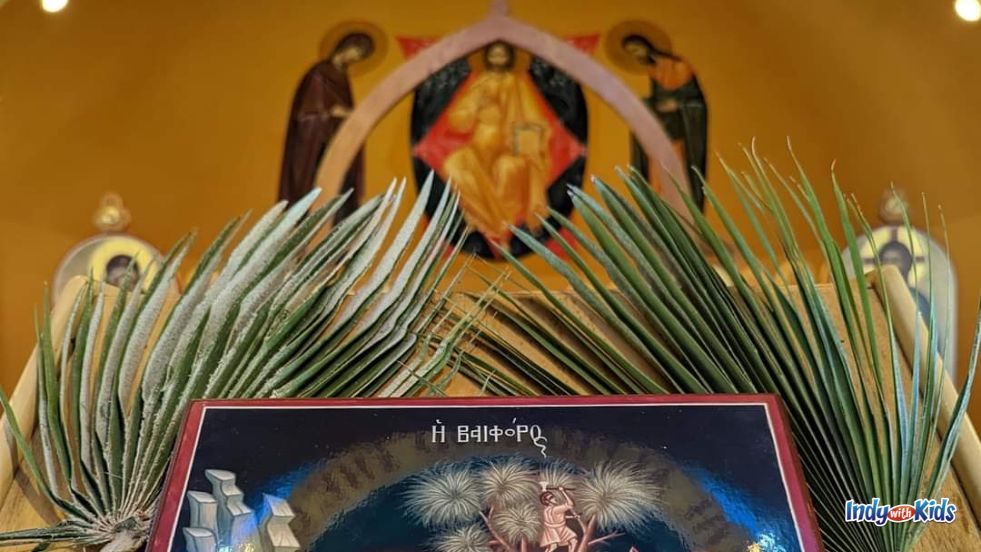
Fasting: What Does it Entail and Why?
One of the biggest components of Great Lent is fasting. Unlike Protestant churches, the fast is prescribed with specific guidelines to follow. The fasting guidelines date back to the sixth through eleventh centuries. For the seven weeks leading up to Pascha, Orthodox Christians participate in what is essentially a vegan diet. This includes all meat, cheese, dairy, eggs, and honey. There are additional days that include wine, oil, and fish fasts as well.
It is important to remember that people will fast as they are able. Personal factors such as health conditions and living situations must be taken into consideration. Some people will be able to keep a complete fast including a total fast for the first 3 days of Lent with no food at all while others may only be able to remove meat from their diet. It is important to keep in mind that fasting is not a law—rather, a voluntary way of remembering to not sin and do evil, and to help keep focus on prayer, repentance, and doing acts of kindness. Boasting about how well you are fasting is also not appropriate, as the practice is kept so that we can become closer to God through prayer.
Immediately following the Paschal Liturgy, the fast will be broken with a big celebration!
Services and Prayer Life
During Great Lent, additional services are completed throughout the week. The first week of Lent is intense, with services every evening. The same is true for Holy Week, the 7th week of Great Lent. In the final days leading up to Pascha, there will be services each day. For the duration of Lent, there are additional liturgies and prayer services to attend.
Orthodox Christians also keep a prayer corner in their homes. These typically have icons of Jesus, Mary, and the Saints with a candle and incense. Morning and evening prayers are completed here. A goal that many families have is to pray more at home and become more intentional about when they are praying. Since less time will be focused on food and meals, more time is given to prayer.
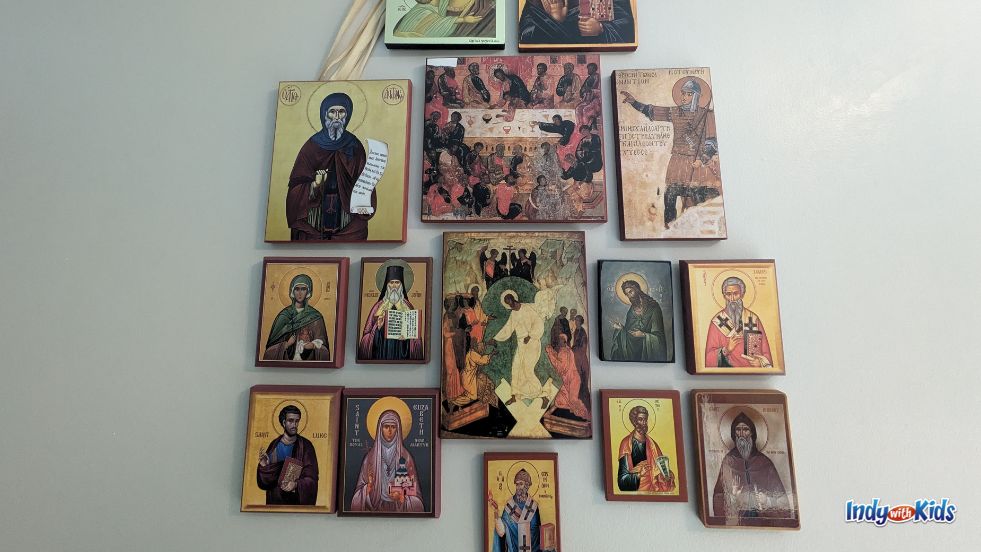
A Special Time for Almsgiving and Helping Others
Almsgiving is the giving of our time, treasures, and resources to others who may need help. A focus on charity is an important undertaking during Lent. It is a time to show our love for God and for all people through helping others and being generous.
There are many ways to introduce almsgiving to your children besides just donating to your favorite charity. Spend some time cleaning up bedrooms. Go through old clothes that no longer fit and toys that are no longer played with. Donate these to local charities. Volunteer time at a soup kitchen or collect non-perishable items to donate to a food pantry. Go and visit people in a nursing home and check on people who may be feeling lonely with no one to turn to. Being a listening ear is another great way to provide for others.
Pascha: The Feast of Feasts!
The Paschal Liturgy is likely the most beautiful service an Orthodox Christian will experience all year long. The journey towards this moment has been long and hard. Many Orthodox parishes will celebrate the Paschal Liturgy as soon as possible with the service beginning at midnight on the Sunday morning of Pascha. The service is begun in candlelight with a procession around the church. The journey from darkness into light is full of beautiful symbolism. Beautiful music is sung, shouts of Christ is Risen are said among the people, and a plentiful feast is enjoyed into the wee hours of the night.
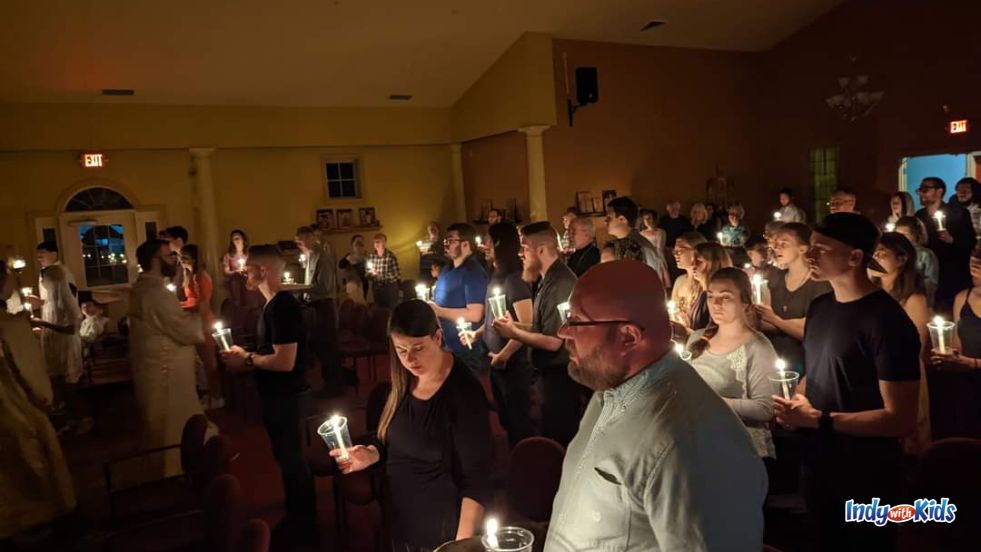
Churches around the world will participate in different traditions following the service. At our parish, people bring in Pascha baskets (not to be confused with the typical Easter basket). These baskets are filled with all of the foods that people have been fasting from. You can find meats, cheeses, decadent desserts, eggs, wine, and so much more in a Pascha basket. The baskets are meant to be shared with everyone. It is typical to see baskets or items from the baskets being passed around for all to enjoy.
Another tradition is the cracking of red dyed hard-boiled eggs. Eggs are dyed red to represent the blood of Christ, with further symbolism being found in the hard shell of the egg symbolizing the sealed Tomb of Christ. The cracking of the shell symbolizes his resurrection from the dead. The eggs are used to play a game called tsougrisma where two players hold red eggs and take turns tapping the other’s egg. The goal is to try to crack their opponent’s egg while leaving their egg whole.
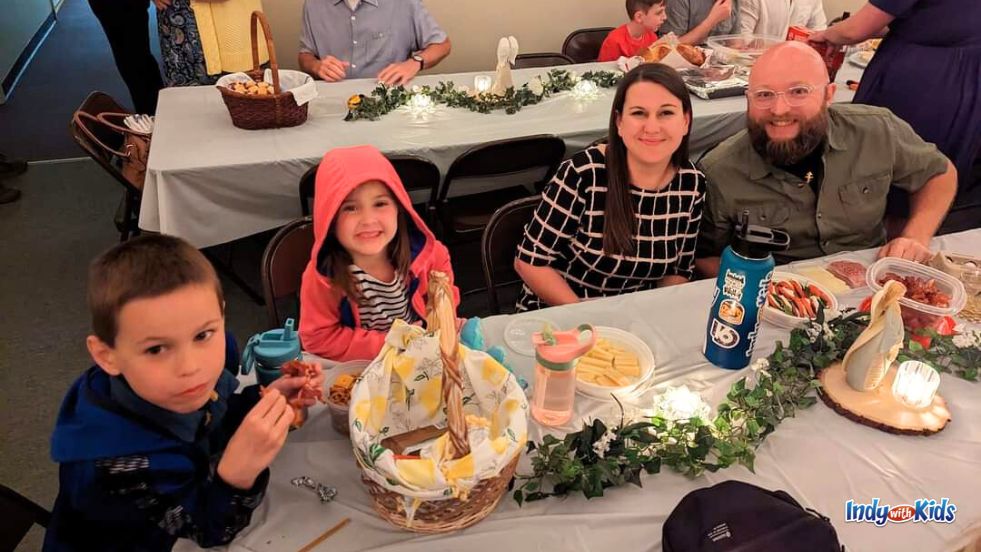
Bright Week
The week following is known as Bright Week and is a fast-free week. This week is typically filled with celebrations. People will enjoy all of the foods they have been fasting from. Many churches will plan picnics or feasts to celebrate together. Some churches will host Egg Hunts for the kids. It is truly a joyous time!
Here at Indy with Kids, we love to learn about other cultures! If you would like to learn more about cultures and traditions, read our guides about Ramadan and the Jewish High Holidays. We also have guides to Easter Egg Hunts, Easter Meals, and Lenten Fish Fries!






